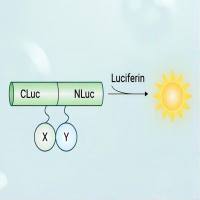Imaging Morphology and Function of Cortical Microglia
互联网
互联网
相关产品推荐

Recombinant-Mouse-Growth-hormone-inducible-transmembrane-proteinGhitmGrowth hormone-inducible transmembrane protein Alternative name(s): Mitochondrial morphology and cristae structure 1; MICS1
¥11452

Recombinant-Saccharomyces-cerevisiae-Mitochondrial-inner-membrane-magnesium-transporter-MFM1MFM1Mitochondrial inner membrane magnesium transporter MFM1 Alternative name(s): MRS2 function modulating factor 1
¥12138

CD1a/Cortical thymocyte antigen CD1A Antibody
¥2400

Recombinant-Rat-Monocyte-to-macrophage-differentiation-proteinMmdMonocyte to macrophage differentiation protein Alternative name(s): Macrophage/microglia activation-associated factor; MAF Progestin and adipoQ receptor family member XI
¥10892

荧火素酶互补实验(Luciferase Complementation Assay, LCA)| 荧光素酶互补成像技术(Luciferase Complementation Imaging, LCI)
¥5999

